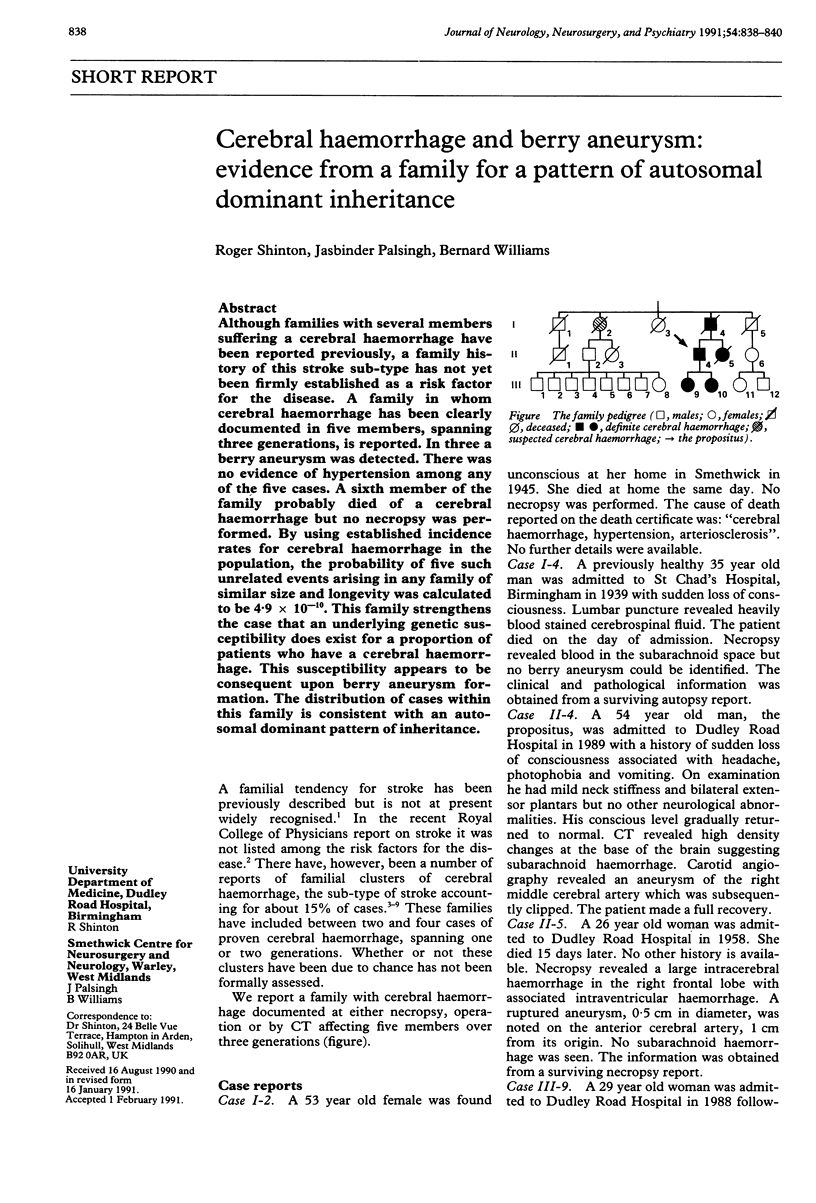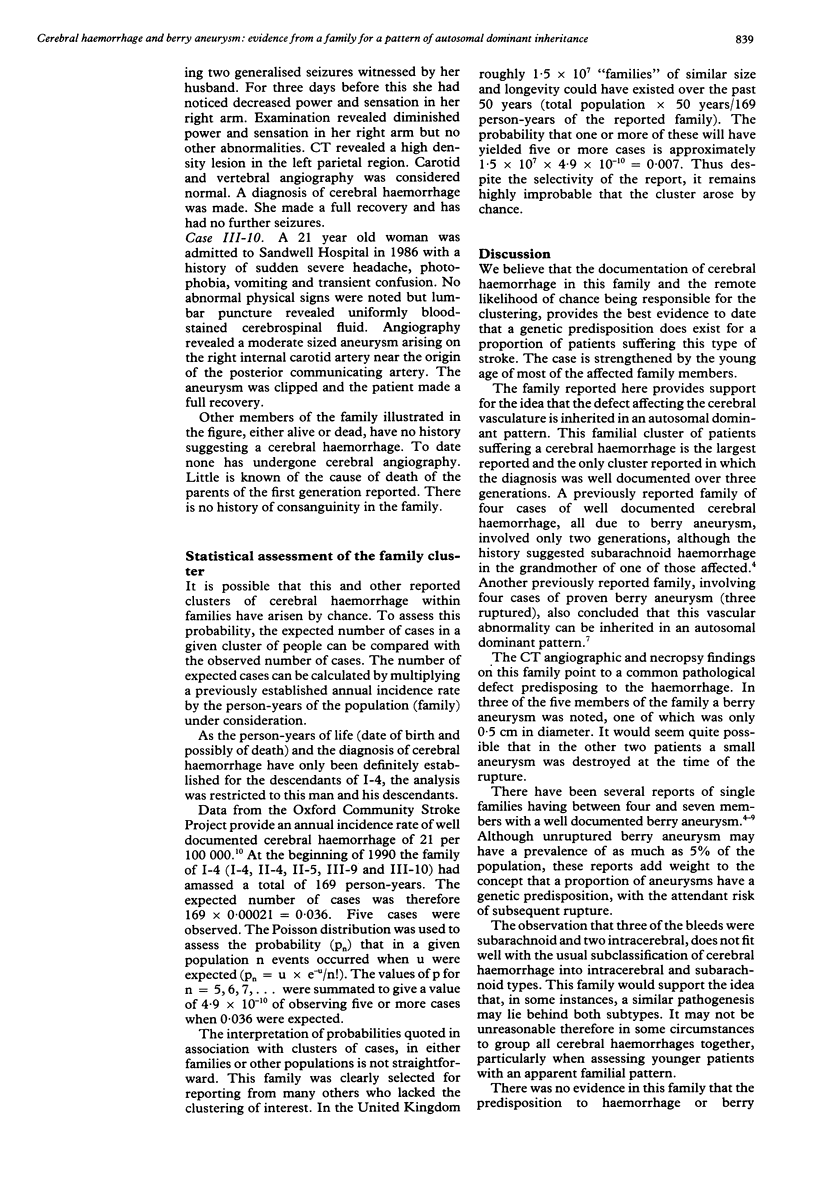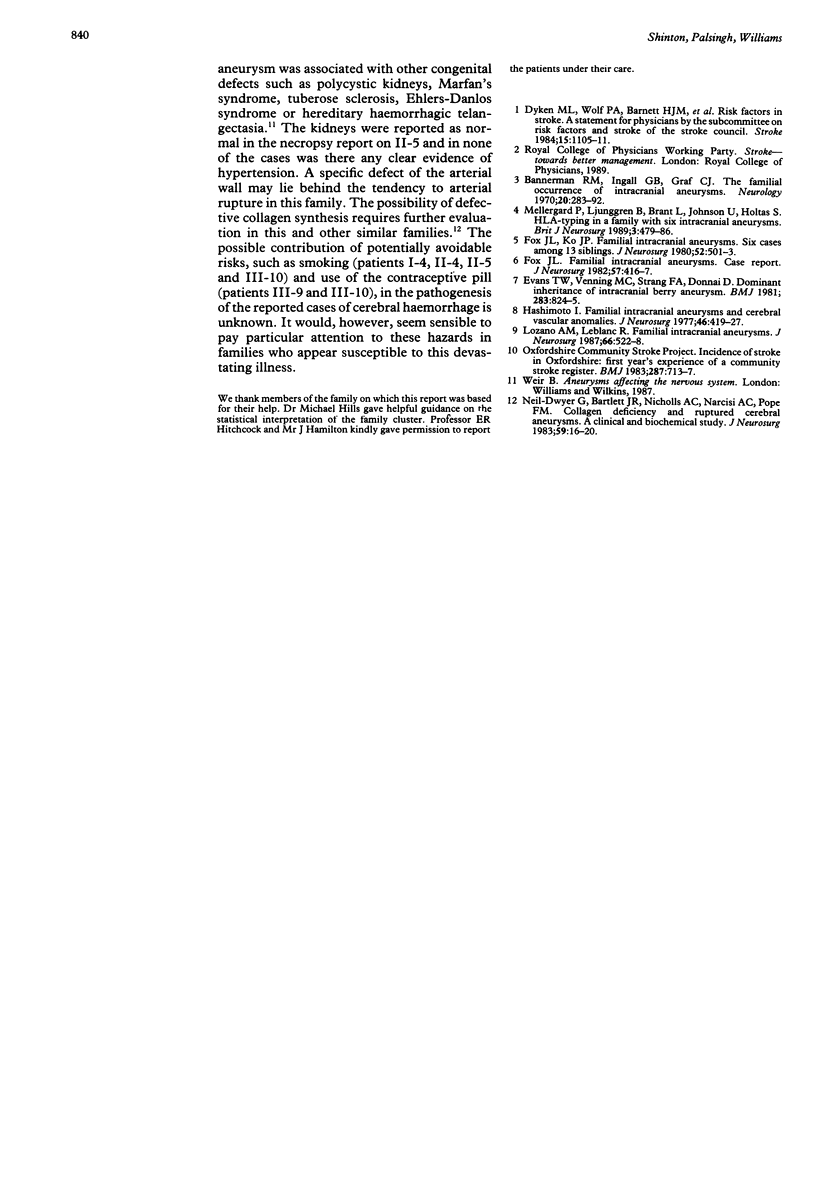Abstract
Although families with several members suffering a cerebral haemorrhage have been reported previously, a family history of this stroke sub-type has not yet been firmly established as a risk factor for the disease. A family in whom cerebral haemorrhage has been clearly documented in five members, spanning three generations, is reported. In three a berry aneurysm was detected. There was no evidence of hypertension among any of the five cases. A sixth member of the family probably died of a cerebral haemorrhage but no necropsy was performed. By using established incidence rates for cerebral haemorrhage in the population, the probability of five such unrelated events arising in any family of similar size and longevity was calculated to be 4.9 x 10(-10). This family strengthens the case that an underlying genetic susceptibility does exist for a proportion of patients who have a cerebral haemorrhage. This susceptibility appears to be consequent upon berry aneurysm formation. The distribution of cases within this family is consistent with an autosomal dominant pattern of inheritance.
Full text
PDF


Selected References
These references are in PubMed. This may not be the complete list of references from this article.
- Ackerman R. H. Of cerebral blood flow, stroke and SPECT. Stroke. 1984 Jan-Feb;15(1):1–4. doi: 10.1161/01.str.15.1.1. [DOI] [PubMed] [Google Scholar]
- Bannerman R. M., Ingall G. B., Graf C. J. The familial occurrence of intracranial aneurysms. Neurology. 1970 Mar;20(3):283–292. doi: 10.1212/wnl.20.3.283. [DOI] [PubMed] [Google Scholar]
- Evans T. W., Venning M. C., Strang F. A., Donnai D. Dominant inheritance of intracranial berry aneurysm. Br Med J (Clin Res Ed) 1981 Sep 26;283(6295):824–825. doi: 10.1136/bmj.283.6295.824. [DOI] [PMC free article] [PubMed] [Google Scholar]
- Fox J. L. Familial intracranial aneurysms. Case report. J Neurosurg. 1982 Sep;57(3):416–417. doi: 10.3171/jns.1982.57.3.0416. [DOI] [PubMed] [Google Scholar]
- Fox J. L., Ko J. P. Familial intracranial aneurysms. Six cases among 13 siblings. J Neurosurg. 1980 Apr;52(4):501–503. doi: 10.3171/jns.1980.52.4.0501. [DOI] [PubMed] [Google Scholar]
- Hashimoto I. Familial intracranial aneurysms and cerebral vascular anomalies. J Neurosurg. 1977 Apr;46(4):419–427. doi: 10.3171/jns.1977.46.4.0419. [DOI] [PubMed] [Google Scholar]
- Lozano A. M., Leblanc R. Familial intracranial aneurysms. J Neurosurg. 1987 Apr;66(4):522–528. doi: 10.3171/jns.1987.66.4.0522. [DOI] [PubMed] [Google Scholar]
- Mellergård P., Ljunggren B., Brandt L., Johnson U., Holtås S. HLA-typing in a family with six intracranial aneurysms. Br J Neurosurg. 1989;3(4):479–485. doi: 10.3109/02688698909002834. [DOI] [PubMed] [Google Scholar]
- Neil-Dwyer G., Bartlett J. R., Nicholls A. C., Narcisi P., Pope F. M. Collagen deficiency and ruptured cerebral aneurysms. A clinical and biochemical study. J Neurosurg. 1983 Jul;59(1):16–20. doi: 10.3171/jns.1983.59.1.0016. [DOI] [PubMed] [Google Scholar]


